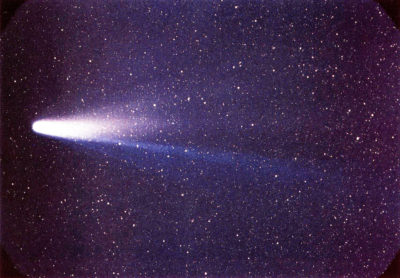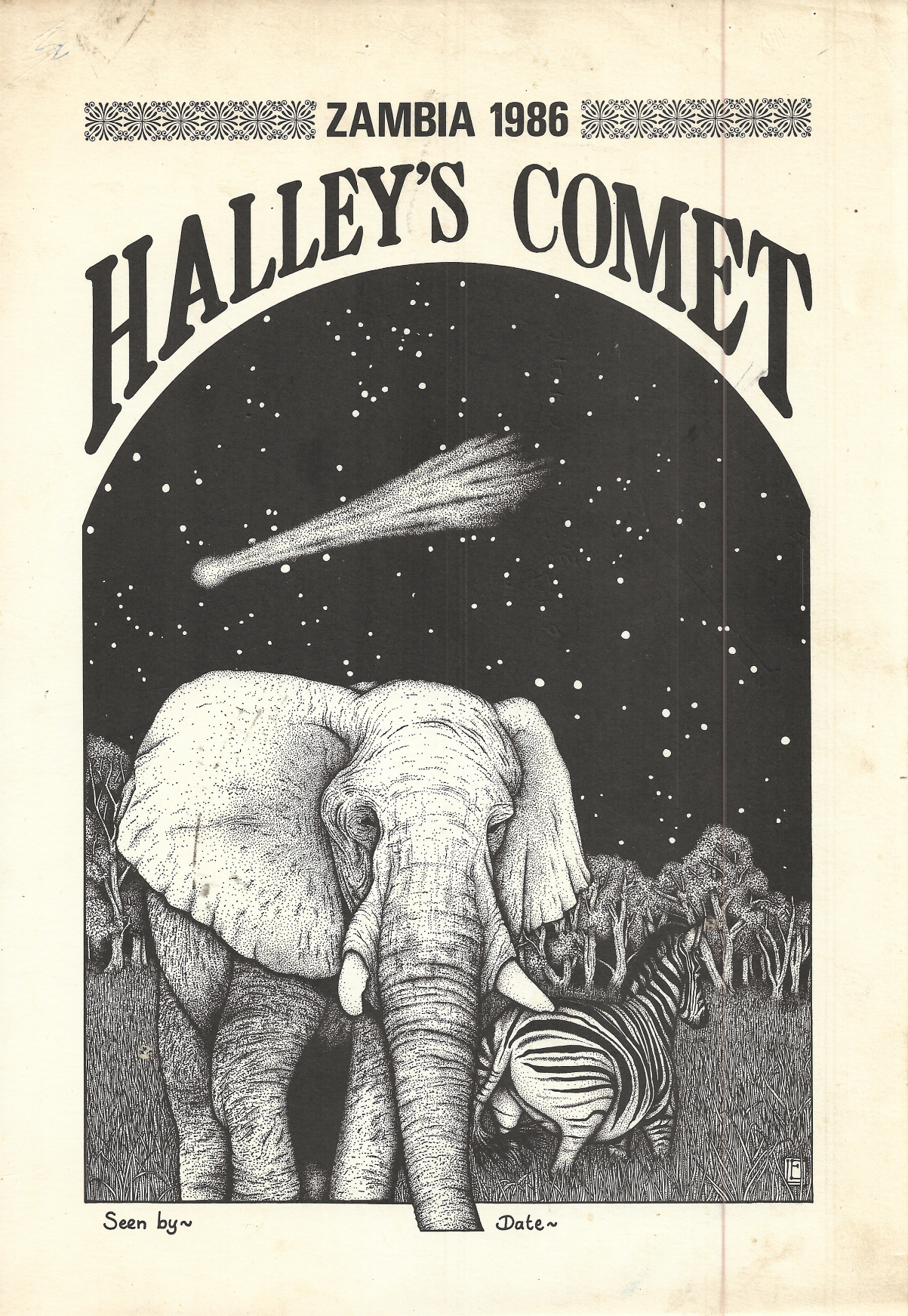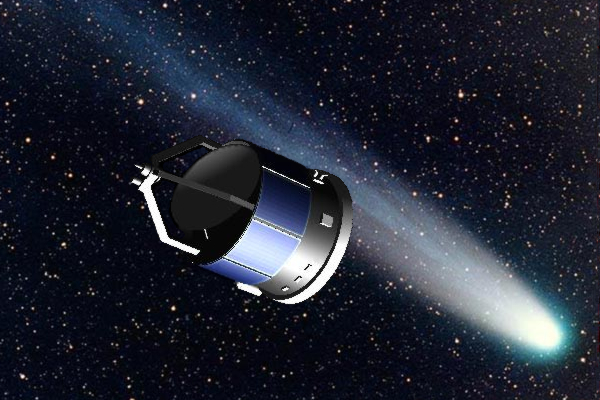Rockets, comets and Deep Space research

Ariane, is the rocket developed in France by the European Space Agency and first launched in 1979. I feel that I have a connection with it that goes back 36 years to 1986 when I was one of the directors of the Mpapa Gallery in Zambia. The Ariane rocket was named after Ariadne the woman abandoned by Theseus after she saved him from the Minotaur. As Ariane is a 3-stage rocket that is non-recoverable I suppose this is the reason for the choice of name.
International cooperation in the exploration of space
Ariane I was the first version of the rocket and it launched the Giotto spacecraft from French Guiana in 1985. The Giotto spacecraft was sent to take photos of the legendary Halley’s Comet as it approached close to earth in its 75 – 79 year cycle and it was the very first time that it was possible to attempt such a project. Originally a project planned by France, Germany, Britain and the USA, it was also done in co-operation with Russia and Japan. After the tragedy of the Challenger disaster, however, the USA withdrew from the project and Japan and Russia each launched their own spacecraft. Giotto was built in Britain in Filton, Bristol.
Halley’s Comet
Halley’s comet had been observed and recorded since 260 BC and it was painted by an Italian artist called Giotto Di Bondone in 1301, which was why the Giotto spacecraft was given that name. Interesting to think that science carries these mythical links from Greece and Italy into the future on its rockets. There was worldwide interest in the comet and the possibility of learning about it through Giotto’s photographs. The project became part of school programmes everywhere and a good friend of mine, Diane Handlos, a science teacher at the International School of Lusaka, wanted to put on a Halley’s Comet exhibition and asked if Mpapa Gallery would host it. Of course, Mpapa Gallery said yes!
The Mpapa Gallery Halley’s Comet Exhibition

Together with her students, Diane Handlos created a giant Halley’s comet with a tail made of cotton waste from the Kafue cotton mill that we suspended in the Gallery. The students made drawings illustrating the comet and the embassies of every country that took part in creating or supporting the Giotto spacecraft venture offered photographs and information and came to the vernissage of our exhibition. There was a very good and friendly atmosphere among all the attaches who were involved. I remember with fondness the Russian attache and his wife who were both as cuddly and round as bears. He gave us a photo of Yuri Gagarin holding a dove because my husband, Dr Mike Bush, when a student, had seen Gagarin in his Red Square parade in Moscow. Gagarin was the first Man in Space in 1957. The exhibition was a great success and Diane organised visits from as many Lusaka schools as possible. It, of course, made no money, but was another important way in which Mpapa Gallery contributed to the cultural life of Zambia. Mpapa commissioned a commemorative drawing of Halley’s Comet from an illustrator. It is a real sadness that there are no photos of the gallery and its exhibition at that time and I can’t recall the names of the people involved.
Zambia and the sighting of Halley’s Comet
Zambia was a good place from which to see Halley’s Comet as there was little light pollution in those days. There was, however, no easy or accurate information about when and where the comet could be seen or what exactly it would look like – we knew it would have a tail. We looked out over many days and weeks and at first confused it with Alpha Centauri. The worst place we chose to look for it was over Lake Kariba because the diesel lights of the kapenta fishing boats were brighter than many African cities then. I finally saw Halley’s Comet on the State House Lodge road at midnight returning home, after a dinner party when the comet and its tail were amazingly clear.
Diane Handlos, Halley’s Comet and Zoom
I suppose that many of the children who saw our Halley’s Comet expo will be in their forties now. I do hope they remember what they discovered then. Diane Handlos was a remarkable teacher with a passion for science and its place in our world. I remain deeply indebted to her. She is also remembered for directing the ISL school play ‘Zoom’ about the ecology and biodiversity of the environment and I was lucky to work with her on that too. Zoom was recorded for Zambian TV. My interest in climate change goes back to before those days and that is why I think it’s so important that young people and adults read my new book, Dust and Rain: Chipo and Chibwe Save the Green Valley published by Gadsden Publishers in Zambia. It is also recommended in the Mediateque in Guadeloupe
The achievements of The Giotto Spacecraft and the Ariane Rocket
Giotto provided the best data and pictures of a comet and was the first to fly close to one.
There are other firsts for Giotto that can be found on Wikipedia. Ariane flight VA256 launched the James Webb Space Telescope in 2021 to explore Deep Space and the origins of the universe.
Zambians are ambitious and have a sense of humour. Zambia had a Space Programme too. It’s hard to know where to place it in Zambian history but I remember being told about it both with laughter and admiration. It seems appropriate to mention it here – we all do reach for the stars don’t we?
